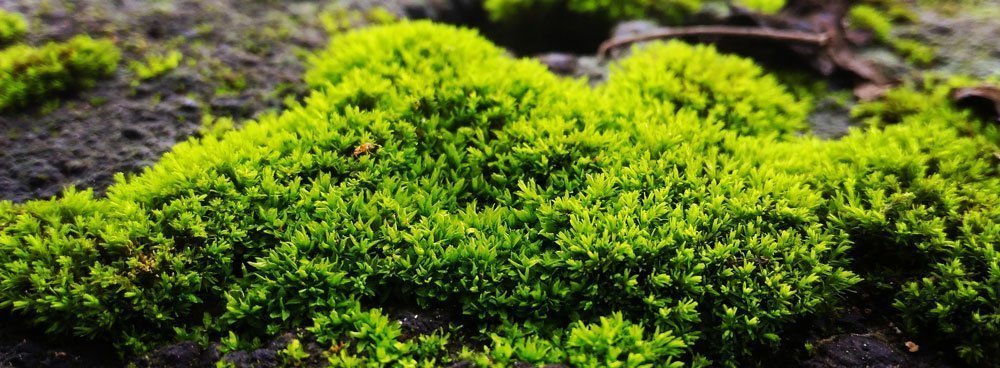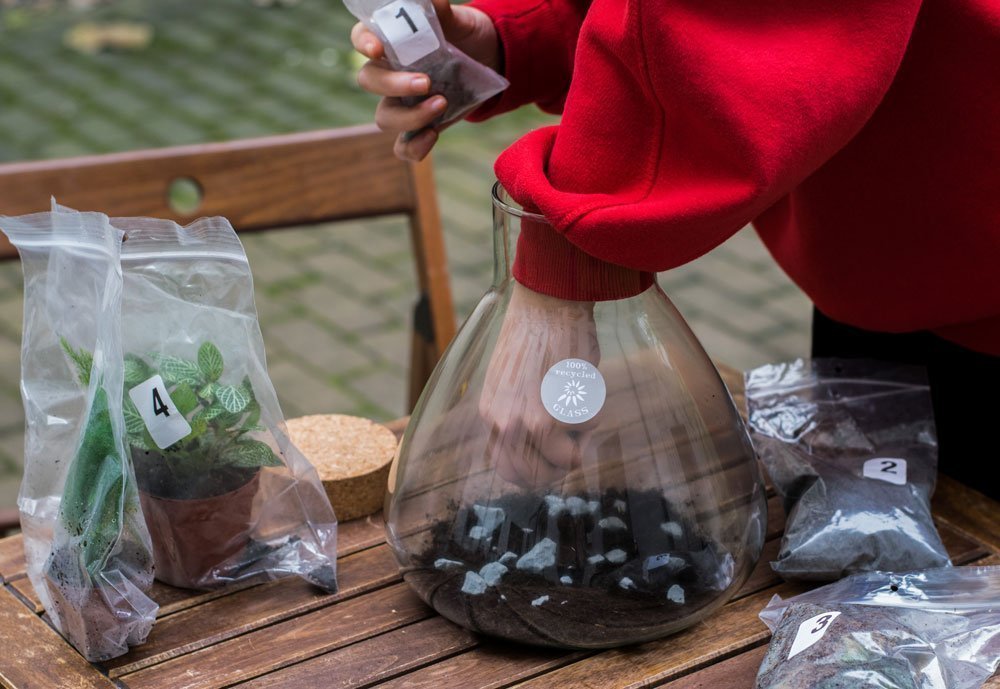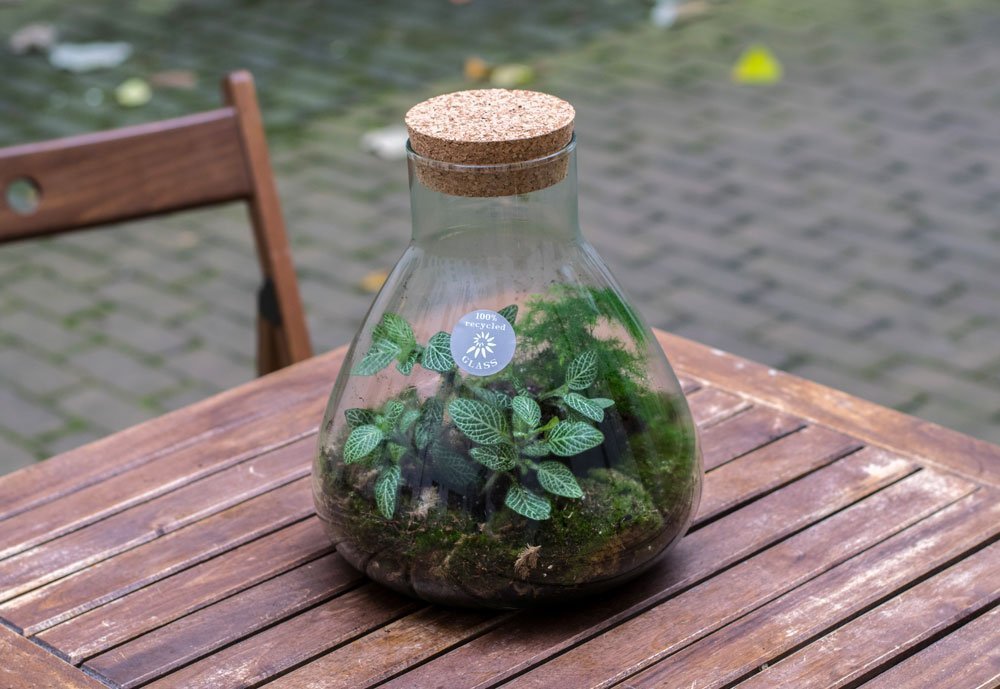You are still looking for a suitable gift for the next birthday party, with which you surpass all gifts? You are looking for a project for you and your children, if the weather outside is too bad? Or do you just want to have a small ecosystem in your home that makes any decoration superfluous? Then we have a wonderful idea for you. We show you in 5 steps how to create a bottle garden.
Contents
- 1 What is a bottle garden and how does it work?
- 2 You need moss!
- 3 Native plants
- 4 Tropical plants
- 5 Animal friends should not be missing
- 6 Step 1: Get material
- 7 Step 2: Disinfect the material
- 8 Step 3: Fill with soil & gravel
- 9 Step 4: Fill with moss & plants
- 10 Step 5: Water, close the lid and rejoice
- 11 Author
What is a bottle garden and how does it work?
A bottle garden is an ecosystem in a closed vessel or glass container. After creating a bottle garden, it can exist self-sufficiently for decades and does not require any external inputs other than daylight.
To understand how a bottle garden actually works, let’s take a look at the natural processes and procedures in nature. The decomposers in the soil live on dead parts of the plants and form carbon dioxide and nutrients for the plants while consuming oxygen. The plant uses carbon dioxide to drive light energy and water, photosynthesis, producing oxygen and sugar.
The water cycle also plays a major role in bottle garden creation. The plants evaporate water through their leaves, this flows over the glass wall back into the soil and is absorbed there again by the roots. When creating a bottle garden, it is important that you choose the right plants and the optimal location. Unfortunately, you can not plant every plant in your bottle garden. Some do not tolerate the high humidity, others become too big for the small biotope.
You need moss!

The most important thing in your ecosystem is the moss. It stores the water in the bottle garden and releases it during the day. The evaporation of water from the moss regulates the water balance in the glass.
Sphagnum moss, Java moss and star moss are the most suitable. Sphagnum moss absorbs a lot of water and creates an optimal climate. Java moss is also often used in aquaristics, as it grows above as well as below the water. Star moss is actually not a moss at all but a clove plant. It is popular for bottle gardens because it bears a pretty white flower between June-August and is also very hardy and easy to care for.
Native plants
Native flora can also be quite interesting. You can also plant your bottle garden according to our native forest. In the woods you can find some ivy and fern species. It is important that you also take some soil from this area. This way there is a high probability that you will pack some seeds and small animals with you. This way your biotope will start to live right away.
Tip: If you accidentally pack grass seeds, they can overgrow your bottle garden and after a short time you can no longer recognize anything.
Tropical plants
However, tropical plant species are best suited. These are particularly happy in a warm, humid climate and are usually very robust. Succulents are less suitable for humid biotopes, as they are used to a dry climate and their soil should not always be moist.
Bromeliads are very suitable for creating a bottle garden, they are accustomed to tropical and subtropical areas. Mini orchids are also popular, there are an incredible number of species and they bloom beautifully. They feel very comfortable, due to the tropical climate, in bottle gardens. Popular species here are the white-flowered Aerangis citrata, Aerangis rhodostricta and the rose-flowered Ascocentrum pusillum.
And, of course, ferns are equally popular and are perfect for creating bottle gardens. Small species are especially Aglamorpha heraclae mini, Aplamorphameyeniana mini , Asplenum daucifolium and Davallia fejeensis.
Animal friends should not be missing
Small creatures are incredibly important when creating a bottle garden. Without them, the whole ecosystem would not work. White isopods or tropical springtails are a few millimeters in size, but can do enormous things. These little beneficial insects feed on dead plant parts and even mold. You can easily get them at specialty terrarium stores, as they are also popular as cleaning creatures for tropical terrariums.
Step 1: Get material

Before you can create the bottle garden, you first need all the materials for it. You need a clear glass jar with a capacity of at least 2-3 liters or more. Here, this canning jar is best suited.
Depending on your wishes and the size of the jar, you will need one or more suitable plants for your bottle garden. These include the already mentioned bromeliads, orchids, mosses and ferns. You should make sure that the plants have about the same requirements for humidity and heat.
You need small pebbles with a grain size of less than one centimeter as drainage. The soil should not be missing when creating a bottle garden, choose the soil to match the plants. So for a succulent bottle garden the succulent soil and for tropical plants like houseplant soil.
If you have a jar with a long thin neck, you will need: Funnel, long tweezers or tongs, long spoon or stick to help. Optionally, you can put some decorative elements like stones, bark or small branches in your bottle garden.
Step 2: Disinfect the material
First, disinfect the jar and stones with boiling water. You can put the stones in a cloth bag or strainer so they don’t disappear down the drain. Simply rinse the jar with boiling water and it is ready to be filled.
Step 3: Fill with soil & gravel

Now fill the gravel or stones about 2cm high in the glass, this is the substrate for the drainage. This is very important so that the soil does not stand in water all the time. Put a layer of soil about twice as thick on top. If you moisten it a little, you can handle it better.
Tip: If you put a thin layer of activated charcoal on top of the drainage, this will prevent odors that can arise from rotting processes in the bottle.
Step 4: Fill with moss & plants

When creating a bottle garden, of course, can not miss the plants. Especially important are plants that need high humidity. The thinner the neck of the bottle, the higher the humidity in your bottle garden.
Put the small soil ball of the plant from the growing place into the bottle. Gently press the soil and plants to make them stand securely. Place the moss pieces on the surface as a final layer.
Step 5: Water, close the lid and rejoice

After creating the bottle garden comes the watering. You can carefully run the water down the glass inner wall, so you can remove dirt from the wall. The soil should be slightly moist, but the roots should not be in the water. Creating a bottle garden can be so easy and makes you happy too. Close the lid and enjoy your own little ecosystem.
Tip: If there is too much water in the jar, you can leave it open for a few days so that excess water evaporates.
How to care for your bottle garden
As you can see, creating a bottle garden is not difficult at all and is a lot of fun. You should continue to watch your bottle garden and see if anything changes. A bright place is important for your bottle garden, but make sure that it is not in the blazing sun. Place it in a visible place so that you can see what is going on inside. Especially for children this can be very exciting and instructive.
After creating your bottle garden, you should observe it for a few days. If the inside of the glass fogs up in the morning, but dries during the day, you have measured the correct amount of water. If the water condenses all day, the glass should be left open for a few days. If no dew is visible, you can still water a little.
If you also want to get creative and create your own bottle garden or simply want to make your loved ones happy, just take a look at our website. There you will find a large selection of bottle gardens!









